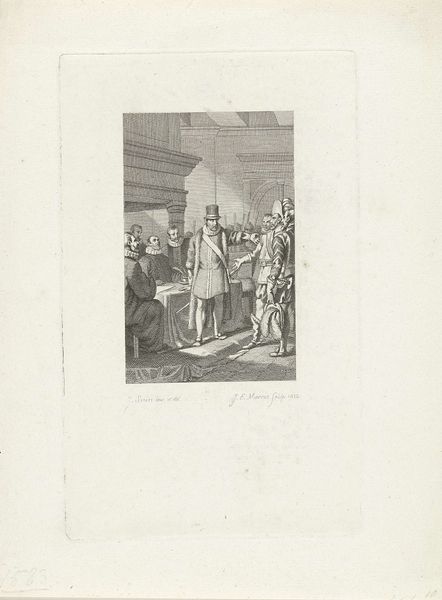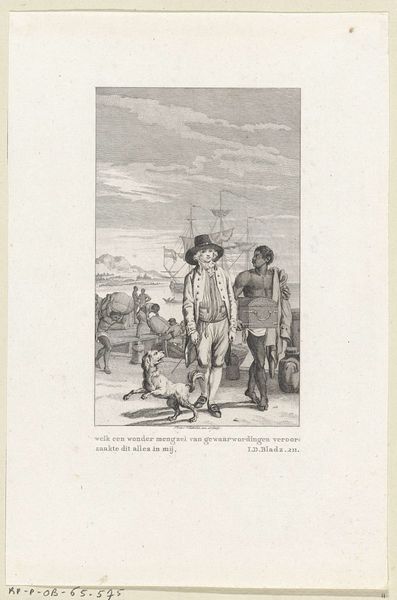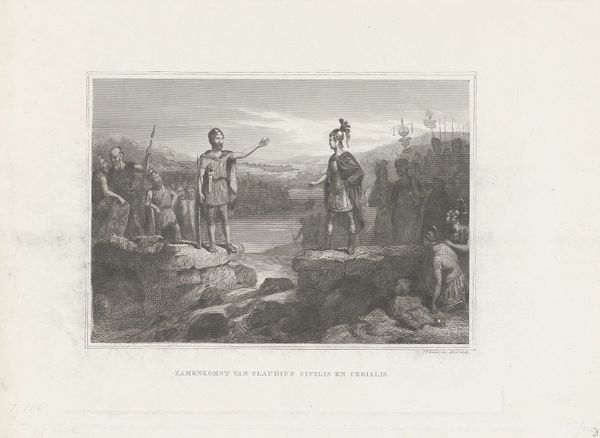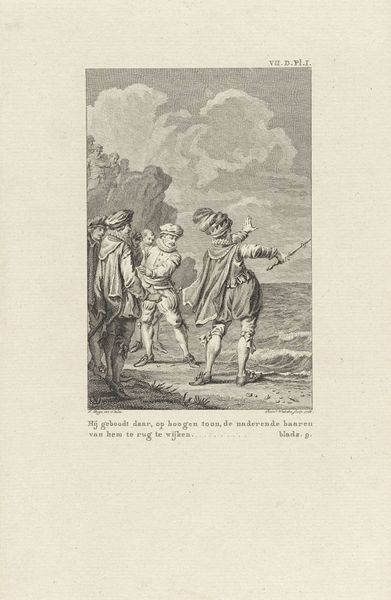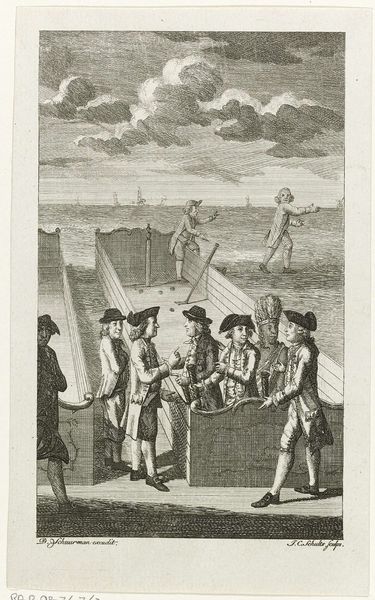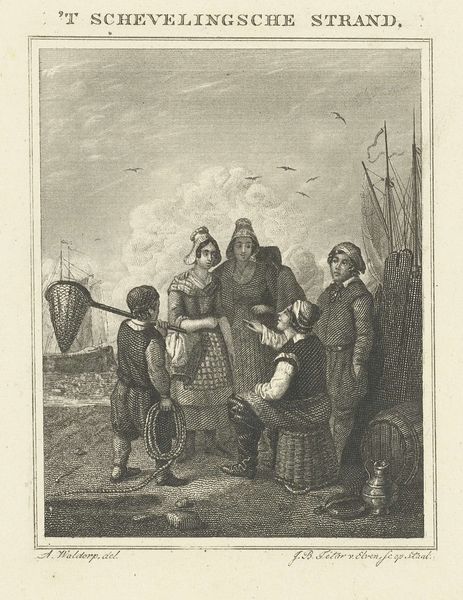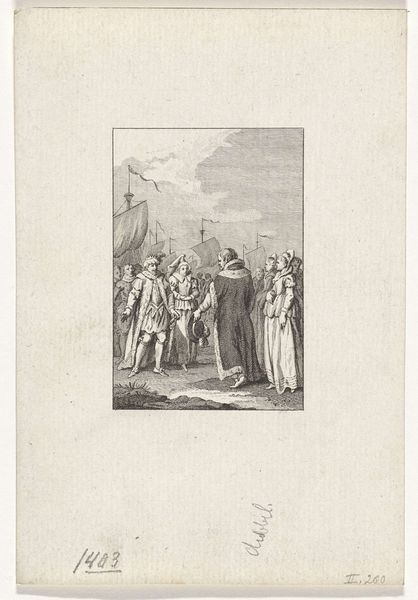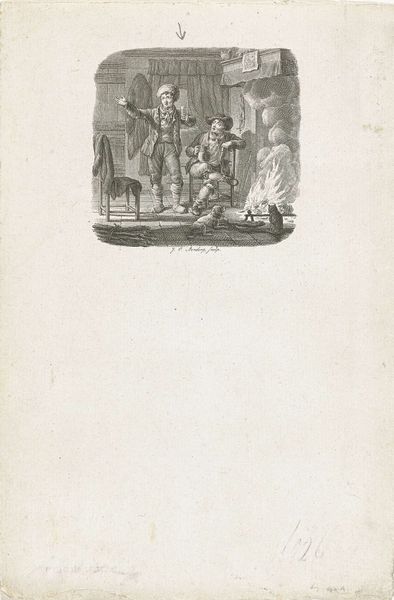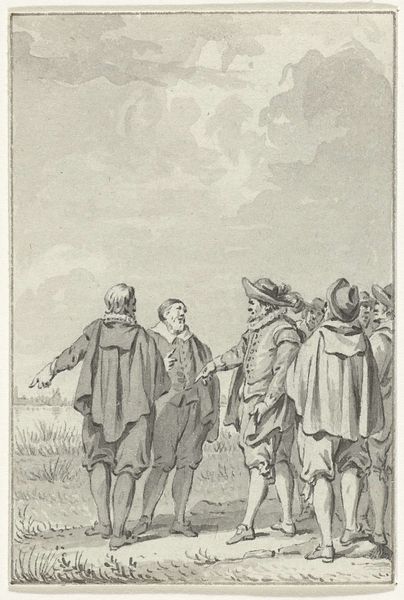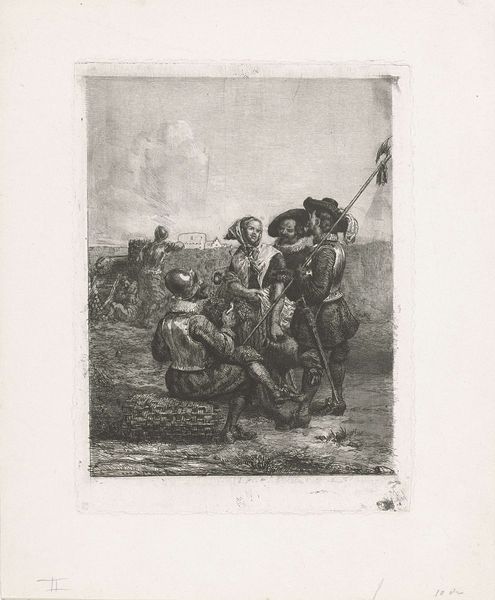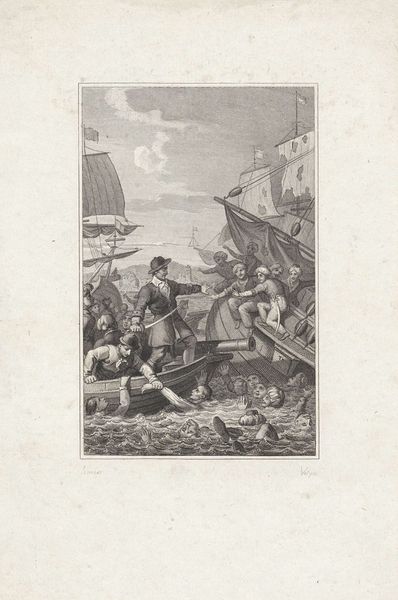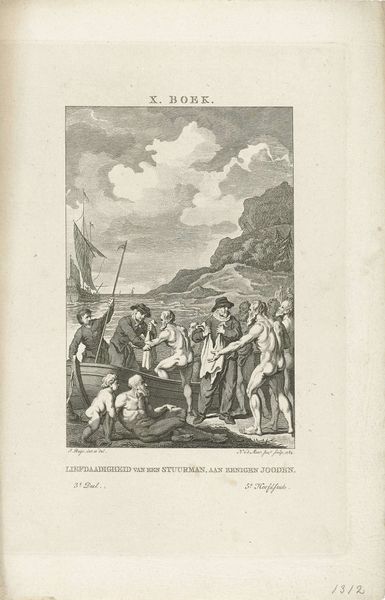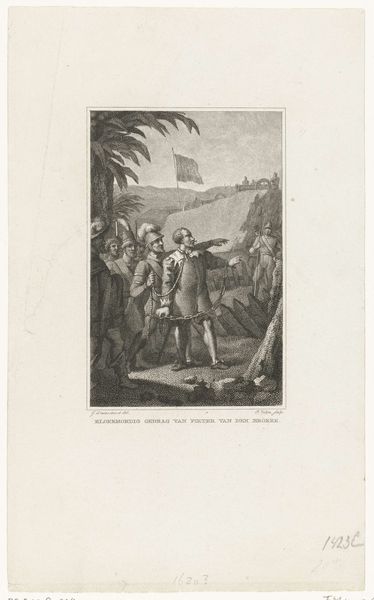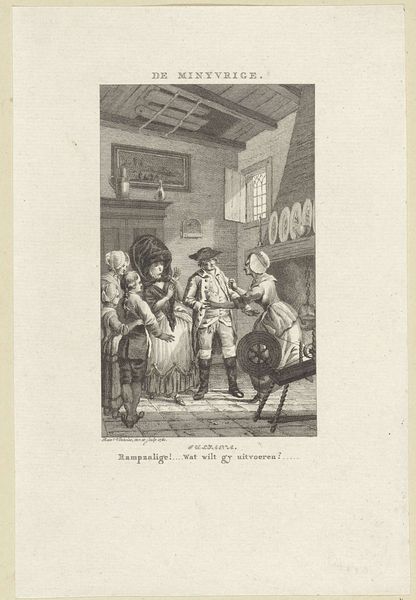
Dimensions: height 227 mm, width 135 mm
Copyright: Rijks Museum: Open Domain
Curator: Let's discuss "Tsar Peter the Great Working at the Wharf in Amsterdam, 1697," an engraving made by Jacob Ernst Marcus in 1814, currently residing here at the Rijksmuseum. Editor: It has an unusual charm, doesn't it? Almost feels like a stage play caught in a single frame. The detail is captivating, though muted in tone. I'm immediately drawn to Peter's informal pose, a stark contrast to his presumed authority. Curator: Indeed. Marcus created this engraving long after the actual event took place. It’s a representation of Peter the Great's sojourn in Amsterdam where, to better understand shipbuilding, he worked as a common labourer. The historical context is key. The image speaks to a desire for knowledge transcending social hierarchy. Editor: And I see that echoed in the symbols. The axe in Peter's hand, a recurring motif for labor and transformation, sits next to a backdrop with figures draped in attire signifying authority. Look how even the architecture of Amsterdam suggests a backdrop to his figure: power, yet grounded through active work. Curator: The engraving emphasizes Peter's agency, actively engaging with the working class to glean knowledge and improve his nation’s naval power. Considering Marcus composed it during a time of significant societal shifts in Europe, there is arguably an endorsement of democratized knowledge embedded in its lines. Editor: Do you believe, perhaps, Marcus intended to humanize this historical icon? To take someone from a position of absolute rule and show him not above hands-on labor? I almost read this work as commentary of someone using tools, of change, as the work's core message. Curator: A plausible argument. This imagery undoubtedly served a pedagogical purpose. It invited its viewers to reconsider power, leadership, and the dignity of labor, even in a historical painting. Editor: In retrospect, it's intriguing to see how this particular artistic vision merged history, craft, and perhaps even a little social commentary, offering us a symbolic glance into the nature of transformation. Curator: Agreed, seeing it through the lens of its symbolic composition truly enriches the historical narrative depicted in Marcus' engraving.
Comments
No comments
Be the first to comment and join the conversation on the ultimate creative platform.
